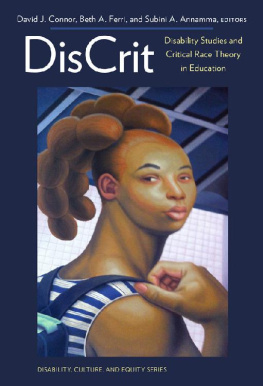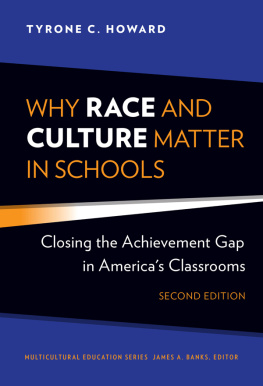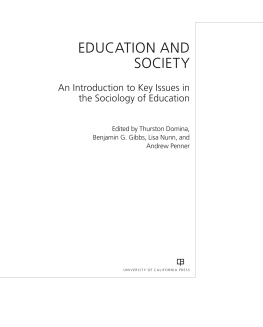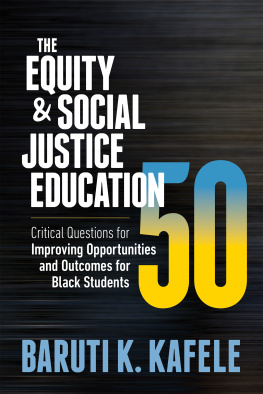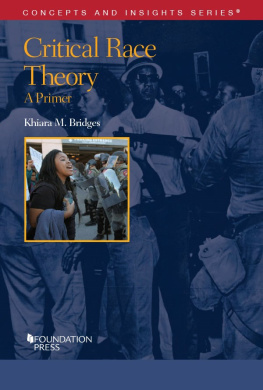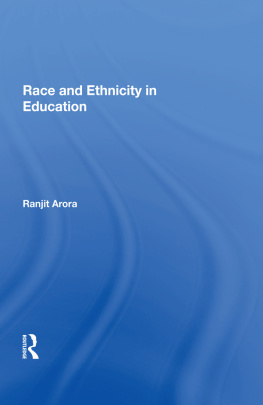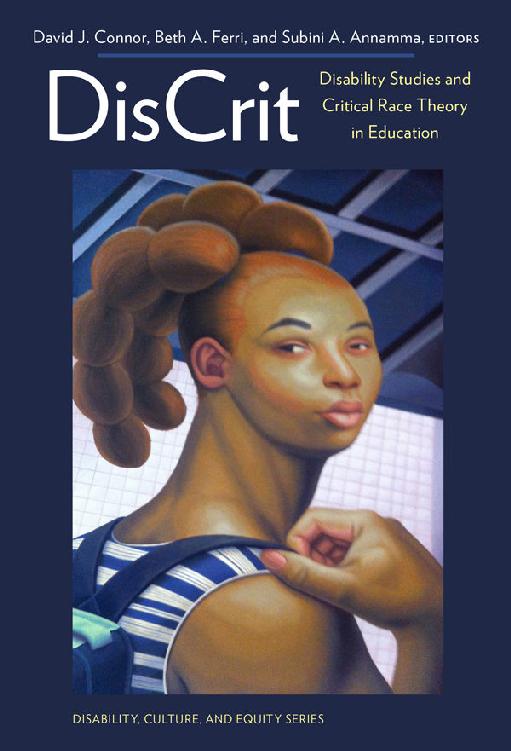David J. Connor, Beth A. Ferri, and Subini A. Annamma
EDITORS
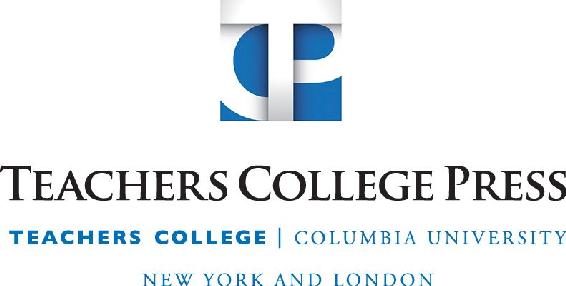
Published by Teachers College Press, 1234 Amsterdam Avenue, New York, NY 10027
Copyright 2016 by Teachers College, Columbia University
We gratefully acknowledge:
Taylor & Francis for giving permission to reprint our original article first published in the Journal of Race, Ethnicity, & Education . www.tandfonline.com , and excerpts from The Colour of Class by Nicola Rollock, David Gillborn, Carol Vincent, & Stephen J. Ball (2015, Routledge).
Lawrence Finney for permission to use his work, City Girl, Red Braids (2002), on the cover of our book, currently in the private collection of Mr. John D. Treadwell. Mr. Finney is represented by the UFA Gallery ().
All rights reserved. No part of this publication may be reproduced or transmitted in any form or by any means, electronic or mechanical, including photocopy, or any information storage and retrieval system, without permission from the publisher.
Library of Congress Cataloging-in-Publication Data
Names: Connor, David J., 1961 editor of compilation. | Ferri, Beth A., 1961editor of compilation. | Annamma, Subini A., editor of compilation.
Title: DisCrit: disability studies and critical race theory in education / edited by David J. Connor, Beth A. Ferri, Subini A. Annamma.
Description: New York, NY: Teachers College Press, 2016. | Series: Disability, culture, and equity series | Includes bibliographical references and index.
Identifiers: LCCN 2015032687|
ISBN: 9780807756676 (pbk.: alk. paper) |
ISBN: 9780807756683 (hardcover: alk. paper) |
ISBN: 9780807773864 (ebook)
Subjects: LCSH: People with disabilitiesEducationUnited States. | African Americans with disabilitiesEducationUnited States. | Disability studiesUnited States. | Racism in educationUnited States. | Discrimination in educationUnited States
Classification: LCC LC4031 .D57 2016 | DDC 371.9dc23
LC record available at http://lccn.loc.gov/2015032687
ISBN: 978-0-8077-5667-6 (paper)
ISBN: 978-0-8077-5668-3 (hardcover)
ISBN: 978-0-8077-7386-4 (ebook)
In memory of
Ellen Brantlinger
&
Jeanette Klingner
&
Steve Taylor
Three exceptional teachers, scholars, mentors, and friends. We stand on your shoulders.
Contents
Introduction: A Truncated Genealogy of DisCrit
Subini A. Annamma, David J. Connor, and Beth A. Ferri
Touchstone Text: Dis/ability Critical Race Studies (DisCrit): Theorizing at the Intersections of Race and Dis/ability
Subini A. Annamma, David J. Connor, and Beth A. Ferri
1.The Black Middle Classes, Education, Racism, and Dis/ability: An Intersectional Analysis
David Gillborn, Nicola Rollock, Carol Vincent, and Stephen J. Ball
2.What a Good Boy: The Deployment and Distribution of Goodness as Ideological Property in Schools
Alicia A. Broderick and Zeus Leonardo
3.Understanding the Intersection of Race and Dis/ability: Common Sense Notions of Learning and Culture
Elizabeth Mendoza, Christina Paguyo, and Kris Gutirrez
4.Expanding Analysis of Educational Debt: Considering Intersections of Race and Ability
Kathleen A. King Thorius and Paulo Tan
5.Reifying Categories: Measurement in Search of Understanding
Elizabeth B. Kozleski
6.Social Reproduction Ideologies: Teacher Beliefs About Race and Culture
Edward Fergus
7.Shadow Play: DisCrit, Dis/respectability, and Carceral Logics
D. L. Adams and Nirmala Erevelles
8.The Overrepresentation of Students of Color with Learning Disabilities: How Working Identity Plays a Role in the School-to-Prison Pipeline
Claustina Mahon-Reynolds and Laurence Parker
9.Race, Class, Ability, and School Reform
Sally Tomlinson
10.Toward Unity in School Reform: What DisCrit Contributes to Multicultural and Inclusive Education
Susan Baglieri
11.A DisCrit Perspective on The State of Florida v. George Zimmerman : Racism, Ableism, and Youth Out of Place in Community and School
Kathleen M. Collins
12.Disability Does Not Discriminate: Toward a Theory of Multiple Identity Through Coalition
Zanita E. Fenton
Conclusion: Critical Conversations Across Race and Ability
Beth A. Ferri, Subini A. Annamma, and David J. Connor
A Truncated Genealogy of DisCrit
Subini Ancy Annamma
David J. Connor
Beth A. Ferri

DisCritDisability Studies and Critical Race Theory in Education , edited by David J. Connor, Beth A. Ferri, and Subini A. Annamma. Copyright 2016 by Teachers College, Columbia University. All rights reserved. To reprint any portion of this chapter, please request permission from Teachers College Press via Copyright Clearance Center, http://www.copyright.com
The genesis of DisCrit, a dynamic framework through which to simultaneously engage with Disability Studies (DS) and Critical Race Theory (CRT), can be traced through an academic lineage of boundary pushing. This work is rooted in the work of intellectual ancestors such as James Baldwin, Anna Julia Cooper, Mary Church Terrell, W. E. B. Du Bois, Yuri Kochiyama, and Bayard Rustin. In naming these people in particular, the goal is not to create an exhaustive list but to trace the ancestry back far before the development of either Critical Race Theory or Disability Studies, to recognize those whose work made these critical theories possible. These theoretical frameworks were forged by people of color and people with dis/abilities respectively, each grassroots perspective purposefully designed to counter hegemonic knowledge-claims about the meaning of race and disability in society. (We utilize the term dis/ability to 1: counter the emphasis on having a whole person be represented by what he or she cannot do, rather than what he or she can, and 2: disrupt notions of the fixity and permanency of the concept of disability, seeking rather to analyze the entire context in which a person functions.) Our epistemological lineage exists outside and within the academy, built from the foundational work of activists, artists, and academics. There are many more whose work laid a foundation for DisCrits beginnings, which is why the title of this introduction claims only a truncated genealogy. However, what is more important to our thinking than naming every contributor is that we were following a path laid by scholars of color, those with disabilities, those with intersecting marginalized identities, and their allies who were teaching us to move past simplistic and unidimensional notions of identity. Instead, to recognize humanity in a richer, nuanced, and more accurate sense, we acknowledge how the works of those before us broke open existing boundaries allowing us to recognize the multiple dimensions of individuals and the systems of oppression and marginalization in which they survive, resist, and thrive.

